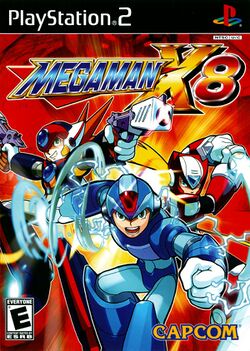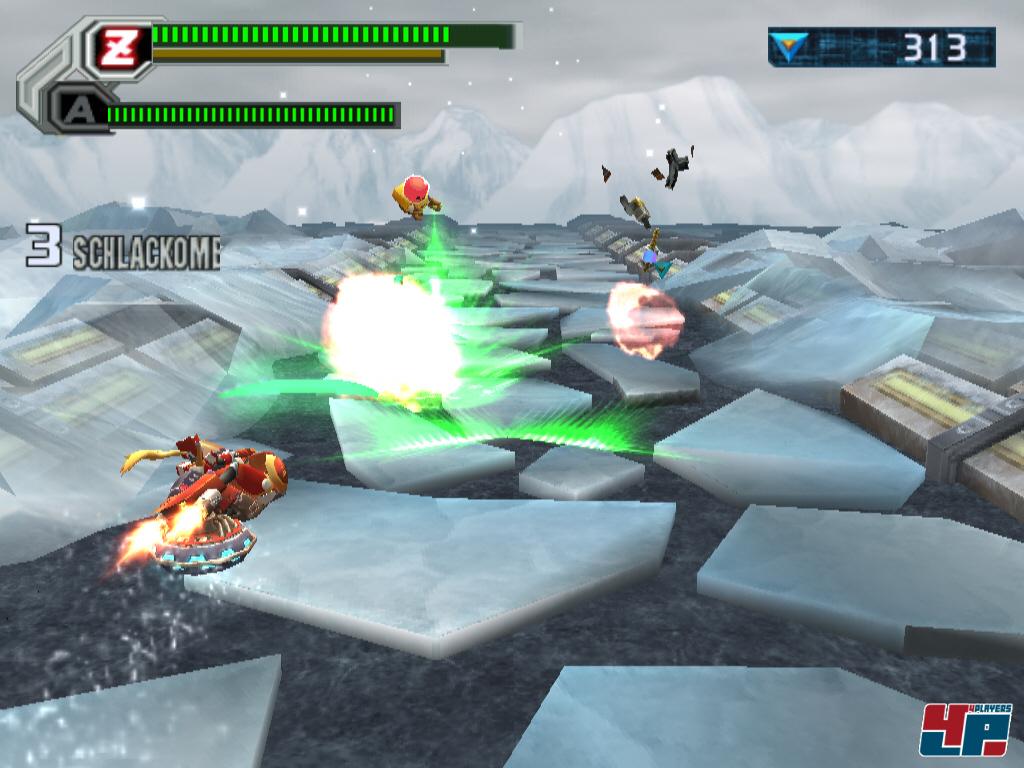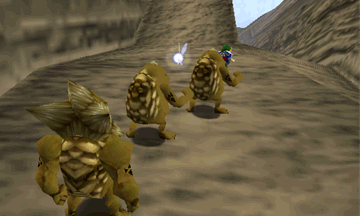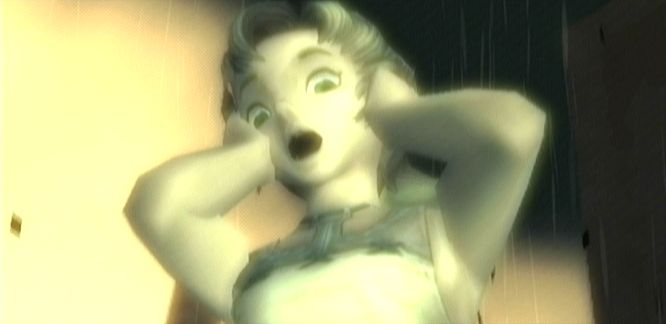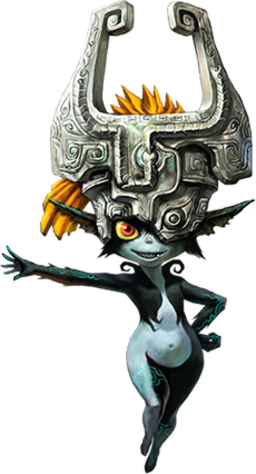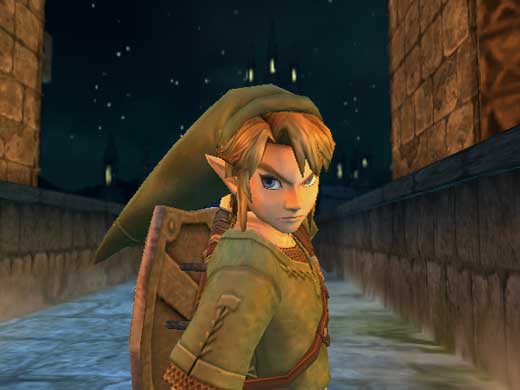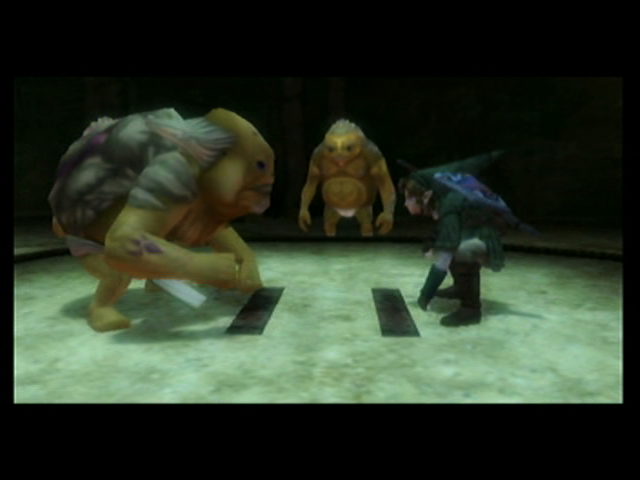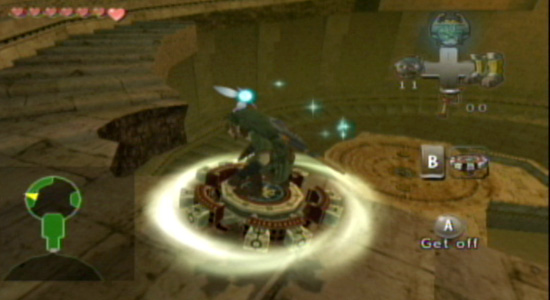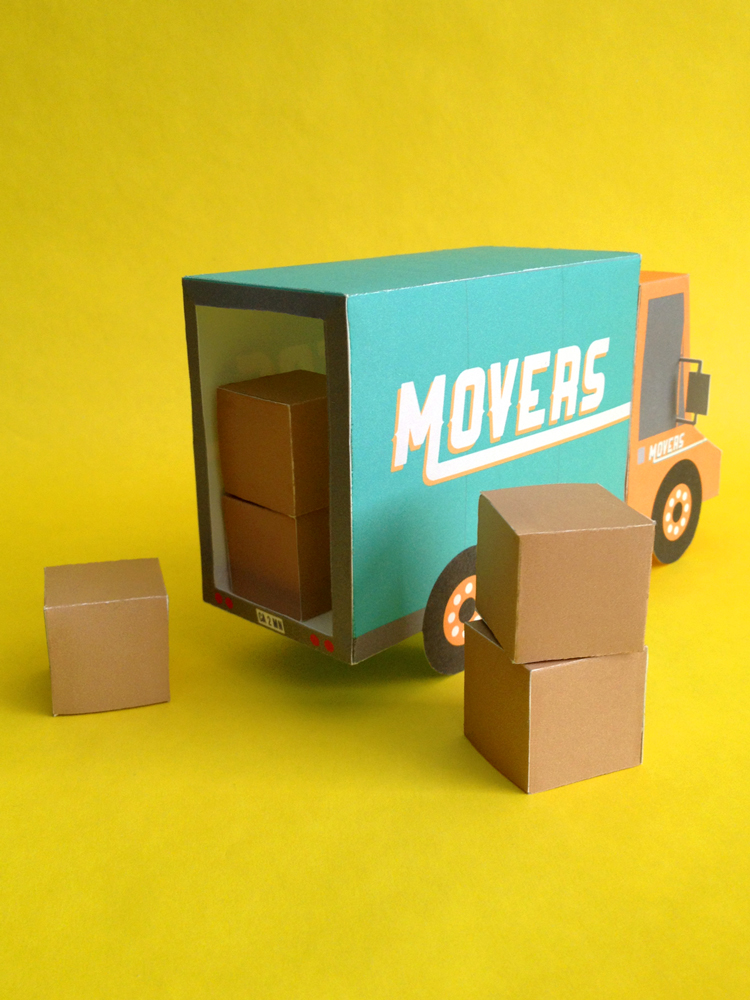Ugh.
Yes, much like just about every other denizen of the
Internet, I’m pretty fed up with Capcom’s current treatment of their corporate
mascot. I wouldn’t by any means call myself a big Mega Man buff, but I do like
the franchise a lot. So, when I get
an iPhone-based, on-rails piece of
insipid sub-excrement that wouldn’t even look passable in Flash and could
easily be replicated on freaking
Newgrounds for the Blue Bomber’s 25th anniversary,
especially considering the kinds of games Mario, Sonic and Zelda have been
getting for their own milestone celebrations, I don’t take it very well. Perhaps one could argue that this only
reflects Capcom’s intentions to ruin all
of its major franchises, if Resident Evil 6’s critical and fan reaction and the
inexcusable garbage they’re calling a Devil May Cry “reboot” are anything to go
by, but for the love of all that is good
and holy, Capcom, this is your beloved
mascot. Treat him with some
respect.
But, supposedly, the real
25th anniversary celebration doesn’t begin until December 17th,
the 25th anniversary of the Japanese release of the original Mega
Man game for NES. On that day, Capcom has prepared for us something truly
special: a fan-made Street Fighter crossover styled after the 8-bit Mega Man games.
Oh, but Capcom funded it, and they’re
even allowing it to be released for free! And by the way, they’re going to use the number of downloads to gauge interest in the franchise. To be fair, I do
applaud their decision to embrace a fan-made game rather than pull the
copyright infringement card like the evil tyrants they are, and it’s also the
main office in Japan that has resulted in the degeneration of Mega Man, while
it was Capcom of America that funded the fan-made project. Perhaps there are
still people at Capcom who care and are doing what they can, and the game does look pretty fun. Besides, who can
argue with a price like zero dollars and zero cents? We'll see what the future holds, but so far it's not looking so bright.
It's really a shame that Capcom as a whole hasn’t
been treating their mascot with much love and respect, but I, on the other
hand, will. For quite a while, I’ve intended to write scathing reviews of such
“classics” as Mega Man X6 and X7 - *shudder* - but in light of the
circumstances, I feel that would be in poor taste. Why dishonor Mega Man even
more than Capcom already has? So, instead, I’m going to take us back to an era
when Capcom actually cared about their mascot by reviewing a game I rather
enjoy: Mega Man X8. Odd choice? Perhaps,
but let me give you a bit of my personal experience with this franchise: X
is…the only Mega Man series I’m really into. Oh, don’t get me wrong, Classic
Mega Man is awesome, but I’m pretty terrible at it. I also enjoyed Zero, but I only
have the first game and have yet to pick up the collection and the ZX series
didn’t interest me much from what I played of it. Battle Network never really
piqued my curiosity either. Also, I only have the Nintendo 64 version of
Legends, which I can’t imagine has aged very well on its original console
anyway. So, yeah. X is my favorite, and even
though X8 isn’t necessarily my favorite entry in the sub-franchise, I have my
reasons for choosing it specifically.
So, as for a bit of information on the game itself, X8 was
released for the PlayStation 2 in 2004 as the last console release in the franchise
until the downloadable Mega Man 9 as well as the last entry in the X series to
date (aside from the remake, Maverick Hunter X). That’s part of the reason why
I chose to review this one (and it also has to do with the fact that I want an X9 with the intensity of a
thousand suns), but honestly, I think X8 is…pretty underrated. See, X8
follows the disastrous X7. As the first entry for the PS2, X7 attempted to
bring some legitimate innovation to the notoriously stagnant franchise, but
failed miserably. With X8, they went back to basics, but at the same time
refined a lot of X7’s ideas in the right direction and even added some new
ones. The result is a game that stands out from the rest of its sub-series not
as being strikingly different in terms of mechanics and structure, but as being
a solid evolutionary leap that shows how you don’t have to completely overhaul
something to make it feel fresh. Debatably, it was the last Mega Man game to
really understand this, so let’s get this party started. Ladies and gentlemen,
this is Mega Man X8.
In Mega Man X8, the future dystopia in which X and friends
live has yet to become any less dystopian, so humanity has decided to relocate
to the moon by building an Orbital Elevator as part of the Jakob Project. However,
the other side of the project involves the creation of advanced New Generation
Reploids, led by the ludicrously effeminate Lumine, that can copy the data of any other
Reploid and are unable to go Maverick…or so the humans think. But then, the old
enemy Vile returns and kidnaps Lumine, and then suddenly all heck breaks loose
and the next gen Reploids are, in fact, going Maverick. Thus, it’s once again
up to X, Zero and Cousin Oliver- I mean Axl, who is a next gen Reploid himself,
to save the world once again. Oh, and some other stuff happens, too. Also, it
ends on a cliffhanger. Yeah, Capcom? Where’s
X9?
Anyway, X8’s storyline is one of the more interesting you’ll find in
the series. It certainly won’t win any awards, but it does keep you into it and is aided by some pretty decent presentation. Sure, the graphics haven’t
aged the best, but the CG cutscenes still look nice and the character art used
for in-engine scenes is fairly expressive. What’s really impressive is that for
the first time in the X sub-franchise, the voice acting isn’t cringe worthy. In fact, the vast majority of the actors on
display are…pretty good. Mark Gatha (X) and Lucas Gilbertson (Zero) both do a
fantastic job of portraying their respective characters and actually reprised
their roles in Maverick Hunter X, and Vile's voice actor is pretty great, too. The rest of the cast ranges from average to
decent, with Axl, unfortunately, still being kind of obnoxious, even if to a
much lesser degree. Alia doesn’t make me want to shoot myself, anymore, though!
And while the Mavericks’ voices are a bit cheesy, what can you really expect
from characters with such delightful names as “Optic Sunflower”, “Gravity
Antonion”, “Gigavolt Man-O-War” and “Burn Rooster”? Yeah, if you thought they
were running out of ideas when they got to “Tornado Tonion”, think again. But
really, the cheesiness of the Mavericks here feels endearing rather than annoying.
Rest assured; there is none of this in X8.
 |
| Mmhmm. |
The characterization in X8 is also spot-on, which is another
thing it improved on over the pile of dreck known as X7. X has always been
characterized as being really depressed over the war, constantly wondering why
we can’t all just get along and will we always have to fight like this and blah
blah blah, but X7 took it one step further: it turned X into a wuss, to the point that he had to be unlocked as a playable character in a
game of his own namesake. Expect none of that in this wonderful game. Zero has
also stopped being stoic and emotionless and started being just as awesome as
he was before X6 completely butchered every aspect of his character. And once
again, he’s been given an excellent voice actor to compliment it, so no longer
does he wonder what he’s FIGHTING FOOOOOOORRRRR. (I had to.) The new support
characters also have a lot of personality, and Alia finally acts like she
actually cares about what’s going on. And Axl is…tolerable, I suppose. It’s
kind of hard to make a character such as him outright likable, but they do
their best. Oh, and don’t worry; Sigma is just as ham-tastic as ever.
The visuals of X8 look…okay. They certainly haven’t aged as
well as the sprite-based graphics of the first six games and the character models are a bit simplistic, but they don’t look
awful either and the way the game blends 3-D environments with a 2-D playing
field is seamless. Admittedly, the soundtrack isn’t up to the series’ standard,
though. Easily the game’s weakest aspect, only a few of the tracks out of the
game’s list are particularly memorable and some of the instrumentation is kind
of bleh. The rest of the game makes
up for it, but that does remain as X8’s main disappointment.
Getting to the gameplay, X8 basically adheres to classic
Mega Man structure. You have to beat eight bosses and you have to get through their
levels to get to said bosses. Once you beat one of said bosses, you get that boss’s
weapon, which is another boss’s weakness. You then get that boss’s weapon and so on and so forth. It’s a tried and true
formula and X8 uses it just the same as ever, but the game also takes pains to
make the gameplay a lot more expansive. Available from the get-go are three
playable characters: X, Zero and Axl, and all three have different specialties
that change the gameplay and all of them also receive different
weapons and moves from the bosses. You take two of these characters into a
stage with you, where you can switch between them at will. You also choose a
support character to aid you, of which there are now three. Palette is good at
analyzing the stage to find hidden routes, Layer is good with enemies and boss
strategies, and Alia dabbles into a little bit of both.
X7 was the first game to introduce the character-switching
mechanic, and, admittedly, that was one of its less terrible ideas. However, in
X7, it felt more like a useful perk than something that genuinely changes the
experience. In X8, on the other hand, the teamwork aspect feels more like a
legitimate game-changer. This is partly due to the fact that the characters’
strengths and weaknesses are much more balanced in X8, which is going to prompt
you to switch between your characters often. While X7’s levels were mostly
designed with Axl in mind, which rendered Zero almost impractical to use at
times, X8’s generally aren’t designed for any particular character. Any
character can overcome any obstacle, although some characters may be easier to
use for certain situations. However, even outside of the level design, the
gameplay encourages you to switch frequently. Occasionally, the character you will be
controlling can get trapped by a boss or enemy’s move, in which case, you can
call the other character in for help. When one character takes damage, some of
that character’s health bars become red rather than disappearing; switch to
your other character, and the wounded character will gradually recover health,
a process you can speed up by attacking enemies. This is very handy in its own
right, but doubly so because characters take damage quickly and, since this is Mega
Man, the game isn’t exactly going to go easy on you. If one character dies, you’re
going to be stuck playing as the other character, but as you collect gems and
kill enemies, a gauge next to your life meter will gradually fill. Fill it all
the way, and the dead character will come back, and if the gauge fills and both
characters are alive, you can perform a deadly and extremely useful Combination
Attack.
Now let’s talk about the characters themselves, starting
with X. X is, in essence, about the same as he ever was in his base form, to
the point that he’s…kind of the most useless character if you don’t give him
any upgrades. He’s got all the same moves you know and love: dashing, charged
shots, Maverick abilities, etc. But, ever the one to plan ahead, Dr. Light
somehow found a way to hide armor upgrades in every stage before he tragically
died. It doesn’t make sense, but hey, I’m not complaining, because this is the
best way the armor system has been handled since X4. In the first four X games,
there were only four armor pieces, each with a different effect, and you’d need
to have all of them for 100% completion. X5, instead, introduced two different types of armor with different
specialties, but you’d have to fully assemble them to use them. X8 also has two
types of armor pieces – Icarus and Hermes – but they can all be mixed and
matched as you please, while fully assembling an armor type still gives you a
special perk. In general, Icarus parts are geared more toward general maneuverability
while Hermes parts are geared towards speed, but all are useful in their own
ways and you’ll need them for X to be effective in gameplay. Of course, X also
gets Maverick weapons as always, and the vast majority of these are really cool and generally useful in at
least some way. There are a few duds, but X’s weapon selection in this game
could justifiably be called one of the best in the series. Axl’s repertoire
isn’t exactly lacking either.
Ah, yes, Axl. This character didn’t exactly make the best
first impression with fans upon his introduction in X7, partially because he
replaced X as the long-ranged attacker for most of the game and partially
because he just plain sucked, but X8
doesn’t just make him tolerable in the the story. In gameplay, Axl is
a freaking beast. He can’t move while
shooting like X can, but instead, you enter a rapid fire mode when you hold
down the “Square” button. From that point, while remaining stationary, you can
aim in any direction using the analog stick. This actually makes him more
flexible than X in a way, combined with the fact that he retains his
ability to hover for short distances with his foot-rockets. Effectively, you
can remain stationary in the air while shooting for a short time, which –
believe me – you will be doing a lot
if you ever control Axl. Not only does this set him apart from the rest of the
cast, but it’s also just plain satisfying.
And again, the arsenal of weapons he gets over the course of the game is pretty
awesome, too, and not all of the weapons function in the same way. He also
retains his copy ability from X7, and while it’s a lot more practical to use
now, I still rarely found myself using it except for getting a few upgrades – a
subject I’ll touch on later. It doesn’t suck this time around, but you rarely
ever need it.
As for Zero, the close-ranged attacker, while defeating
Mavericks doesn’t normally give him any weapons, his moveset is the most
expansive out of all of the X series. Zero always received new moves from
Mavericks rather than new weapons, but in previous games, not all of them were
very practical to use. Generally, you’d find a few that worked and just stick
with those. X8 gives him not only a much more varied moveset, but also a much
more practically useful one. But Zero
also gets several new weapons, which, while basically optional, add more depth
to this character’s close-ranged gameplay. All of them have their various
advantages and can even change the effects of Zero’s moves or even his base combo.
My favorite ended up being the D-Glaive, which has a wider attack radius than
his other weapons and even has an awesome spin attack. Of course, even it is
outclassed by the Sigma Blade, but you don’t unlock that until after you beat the game. Overall, Zero’s more
hack-n-slash take on the Mega Man gameplay is still a lot of fun and
continues to add a layer of diversity to the gameplay.
 |
| One of his new weapons is two Japanese fans. Sharp Japanese fans. |
But while the gameplay variety offered by these three characters is great, it would be basically meaningless if there weren’t
any good level designs to compliment it. Some of the ever-annoying critics seem
like they would have disagreed around the time of this game’s release, but I
personally think that the level designs of Mega Man X8, in general, are pretty
dang good. A massive step up from the cheap and rushed frustration-fests of X6
and X7, X8’s level designs are very challenging, but also fair, like the level
designs in a Mega Man game should be.
Each of them creatively uses challenges posed by both the enemies and level
structure, and a lot of areas feature some pretty unique ideas. Gravity
Antonion’s stage, for example, features areas in which you must use switches
that rotate the stage either 90 or 180 degrees to maneuver through it; Burn
Rooster’s stage requires you to descend a volcano base while using passing
platforms so that you don’t fall down or
fall behind; and Optic Sunflower’s stage hearkens back to Cyber Peacock’s level
in X4 by forcing you to complete ranked challenges, but has its own unique take
on it. Oh, and there's also a level where you get to use a crane to destroy a giant Mechaniloid. There is one dud level, though. That would be Gigavolt
Man-O-War’s stage, which entirely consists of you chasing the boss down. It
doesn’t sound too bad on paper, but there’s a time limit and the way they’ve
done it is just plain frustrating.
 |
| This was really annoying. |
As for the bosses, I’d probably say that they’re some of the
most fun and challenging I’ve personally experienced in the series. While
bosses in previous games might switch attack patterns occasionally, if you had
their weakness, they’d generally be quite easy. This is not the case in X8.
Even if you have a boss’s weakness, it’s pretty rare to find one that’s a total
pushover. Bosses are constantly changing up their moves and strategies, so you always
have to be on your toes. Many even use the layout of the arena to their
advantage moreso than prior bosses, and bosses also get invincibility periods
just like you, so there are times where you will have to focus more on dodging
attacks rather than delivering them. Regardless, the bosses in X8 are
difficult, but, again, fair, and tons of fun to fight.
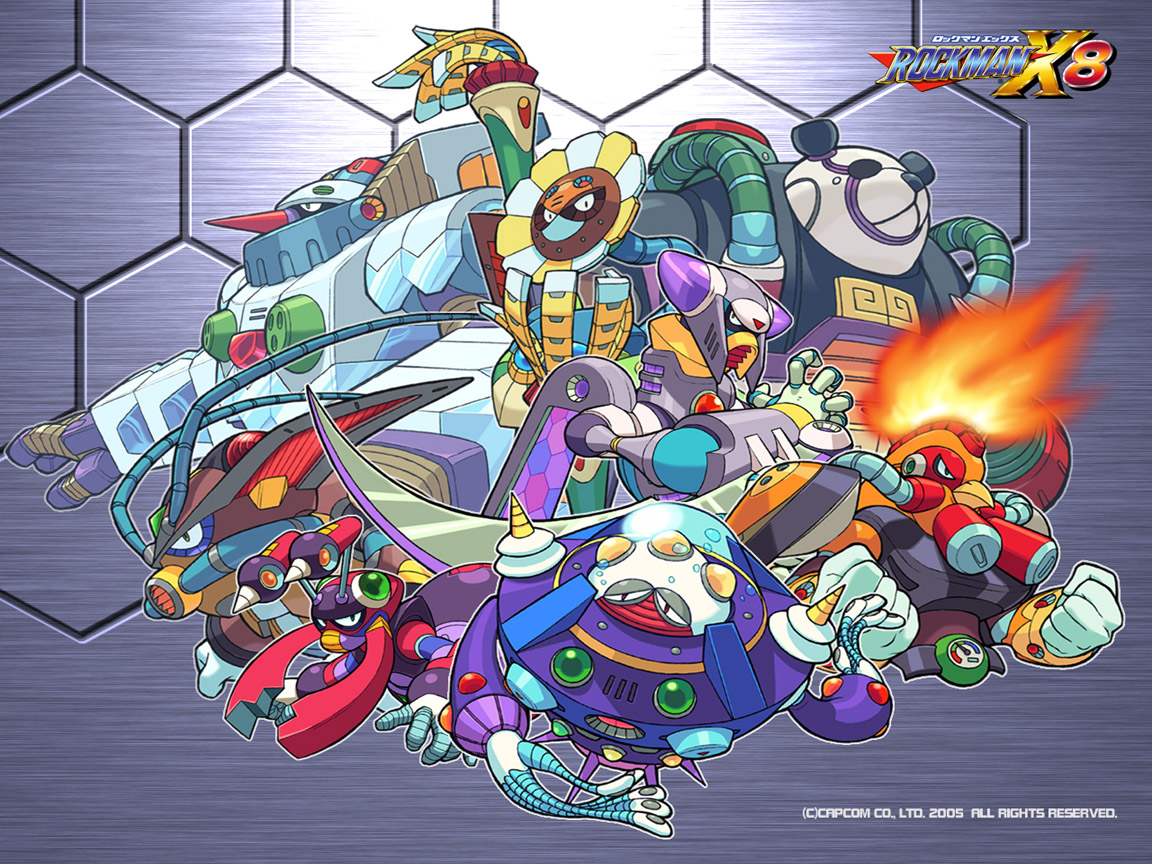 |
| They're still completely ridiculous, though. |
When it comes to other matters of importance, one of the
most prominent differences in X8 is that powering up your characters is much
more important than it was before. As you kill enemies and traverse a stage,
you’ll find pick-ups called “Metals”, which function as kind of a currency. You’re
not technically “paying” for anything, but you will need certain amounts to
make upgrades in the R&D Lab. These upgrades include those that affect all three
characters, with most of these being temporary, and those that only go to a
single character. Heart Tanks are now done away with, in fact, in favor of two
buyable health upgrades, a change likely made to accommodate the new partner
system. Regardless, the R&D lab is a very welcome addition to the game, not
only because it gives easy access to various upgrades so long as you have the
materials, but also because it opens the door to more exploration of the game’s
levels.
Another one of the less idiotic ideas introduced in X6 and
carried over into X7 was the Chips, or permanent character power-ups, and X8 is
the only X game to date to execute this idea well. Rather than having the Chips
tied to Reploids that can easily be killed forever and only going to the
character you saved the Reploid with if it didn’t
get killed, the mostly optional Chips as well as Zero’s extra weapons are
merely found by exploring the levels using the abilities you collect throughout
the game. Thus, the item collection aspect of the X series is expanded upon
more so than ever before. It really isn’t perfect, though. If you intend to get
100% in this game, then you’re going to have one heck of a time. Without some very strategic planning, you’re probably
going to have to play through each stage several times to get everything and a
lot of items are so well-hidden that you pretty much have to use a guide. But, at the same time, you aren’t by any means
going to need everything to beat the game, even on Hard Mode. That’s the great
thing about it. All of this stuff is there, but if you don’t feel like going
out of your way to get it, you don’t have to. Not to mention that the game is
designed with multiple playthroughs in mind, so this isn’t completely
unjustified. In the end, with this on top of X’s armor pieces, which I already
went over, exploration and upgrade collection are more substantial than ever
before.
Really, if there’s one thing X8 does significantly worse
than previous installments, it’s that you…sort of have to buy extra lives in this game. The amount you can hold is also
limited based on what difficulty level you’re playing on – play the game on
Hard Mode and you can only have three.
This is likely the only real aspect of fake difficulty present in the game. It’s
not a massive problem, but it is
pretty asinine. Also, while I doubt it would be very bothersome now that the
game is eight years old and could easily be found for pretty cheap, Mega Man X8
is quite short. But hey, most Mega Man games are pretty short, and X8 does
offer item collection and a New Game Plus to keep you occupied even after you
beat it.
So yeah. With all of that said, can you see why I want a
Mega Man X9 so badly? It’s not just because
of my partiality to the X series – though, make no mistake, that has a lot to
do with it – but also because of what X8 represents. I do believe that the
first five X games are all very good (and I’d even say that X4 is the best out
of all of them), but it’s true that the series did stagnate quite a bit. Then
X6 ruined everything with its awful level design and poorly-translated,
Swiss-cheese mess of a story and X7 is quite possibly one of the worst games to
come out of any major gaming franchise. To put things into perspective, that puts it down there with the likes of Sonic 06. Yeah. But X8 followed and succeeded in almost every way the last two games
failed, not only at being a good Mega Man X game, but also at bringing some
legitimate evolution and expansion to this stagnant franchise. In the
context of the series, X8 felt fresh, but after that, the X series just quietly
ended along with Mega Man’s time on home consoles. To me, X8 deserves a sequel that would not only do
it justice, but also the rest of the X series. I wouldn’t even care if they did
the same thing that they did with Mega Man 9 and make a 16-bit throwback to the
SNES games; just conclude this story, and give it a memorable end. Heck, if
this Street Fighter X Mega Man thing turns out alright, I wouldn’t even mind if
they just let the fans make it. Either way, so long as the game was good,we'd be happy.
But alas, unless Capcom suddenly starts giving a crap about
their core IP, I don’t see this happening in the near future. Don’t say I’m
just asking Capcom to make the game I
want without regard for what’s actually best for the franchise. For one thing, Capcom has already proven that they have no idea what's best for the franchise, but really, I’m not like those
idiot Sonic fanboys relentlessly gagging for Sonic Adventure 3 because it will “save
the series”. Mega Man X is a unique sub-franchise with its own principles,
mechanics, and storyline that sets it apart from other Mega Man games, and none
of the other numerous Mega Man sub-franchises are quite like it. Maybe the Zero
series is kind of similar, but not
strikingly so from what I played of it. Not to mention that, if you think about
it, the X series was Mega Man’s
flagship console series, and it hasn’t been touched in a long time, so it would
be appropriate or maybe even nostalgic for Capcom to revisit it. Looking at the success of Mega Man 9 and 10, I think there’s a good chance a lot of
people would buy it.
But I suppose anyone reading this is quite tired of my
whining now. Bottom line, Mega Man X8 is a freaking awesome game. When compared
to the rest of the X series, I’d say it falls somewhere in the middle: it’s not
quite as good as X4, X1, or maybe even X5, but it’s better than X2 and X3 and miles ahead of the two infamous games I’ve
been deriding for almost the entire review. If you ever find it, I’d definitely
recommend it; you’ll most likely find a challenging, rewarding and, most
importantly, fun Mega Man experience.
